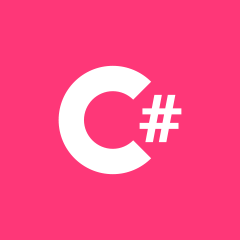如何从命令中获取输出以实时显示在窗体上的控件中?
从网络上的各种来源,我已经把下面的代码用于经由执行命令CMD.exe,并从捕获输出STDOUT和STDERR。
public static class Exec
{
public delegate void OutputHandler(String line);
// <summary>
/// Run a command in a subprocess
/// </summary>
/// <param name="path">Directory from which to execute the command</param>
/// <param name="cmd">Command to execute</param>
/// <param name="args">Arguments for command</param>
/// <param name="hndlr">Command output handler (null if none)</param>
/// <param name="noshow">True if no windows is to be shown</param>
/// <returns>Exit code from executed command</returns>
public static int Run(String path, String cmd, String args,
OutputHandler hndlr = null, Boolean noshow = true)
{
// Assume an error
int ret = 1;
// Create a process
using (var p = new Process())
{
// Run command using CMD.EXE
// (this way we can pipe STDERR to STDOUT so they can get handled together)
p.StartInfo.FileName = "cmd.exe";
// Set working directory (if supplied)
if (!String.IsNullOrWhiteSpace(path)) p.StartInfo.WorkingDirectory = path;
// Indicate command and arguments
p.StartInfo.Arguments = "/c \"" + cmd + " " + args + "\" 2>&1";
// Handle noshow argument
p.StartInfo.CreateNoWindow = noshow;
p.StartInfo.UseShellExecute = false;
// See if handler provided
第一次运行不收集任何输出,只显示退出代码。
第二次运行不会收集任何输出,但会显示窗口。
这样做的效果是输出实时出现在控制台窗口中。
第三次运行使用 GetOutput 来收集输出。
这样做的效果是在运行完成之前不会出现输出。
最后一次运行使用处理程序实时接收和显示输出。
从外观上看,这看起来像第二次运行,但它非常不同。
对于接收到的每一行输出,调用 ShowString。
Show string 只是显示字符串。
然而,它可以对数据做任何它需要的事情。
我正在尝试调整最后一次运行,以便我可以使用命令的输出实时更新文本框。我遇到的问题是如何在正确的上下文中使用它(因为没有更好的术语)。因为 OutputHandler 是异步调用的,所以它必须使用InvokeRequired/BeginInvoke/EndInvoke机制与 UI 线程同步。我对如何使用参数执行此操作有一点问题。在我的代码中,文本框可能是选项卡控件中的几个之一,因为可能会发生多个背景“运行”。
 慕运维8079593
慕运维80795931回答
-

潇湘沐
代码在此示例中执行的操作的简要说明:shell 命令 ( cmd.exe) 首先运行,start /WAIT用作参数。或多或少与以下功能相同/k:控制台在没有任何特定任务的情况下启动,在发送命令时等待处理命令。StandardOutput,StandardError并且StandardInput都被重定向,将ProcessStartInfo 的RedirectStandardOutput、RedirectStandardError和RedirectStandardInput属性设置为。true控制台输出流在写入时将引发OutputDataReceived事件;它的内容可以从DataReceivedEventArgs的e.Data成员中读取。将其ErrorDataReceived事件用于相同目的。 您可以对这两个事件使用单个事件处理程序,但是,经过一些测试后,您可能会意识到这可能不是一个好主意。将它们分开可以避免一些奇怪的重叠,并允许轻松区分错误与正常输出(注意,您可以找到写入错误流而不是输出流的程序)。StandardErrorStandardInput可以重定向,将其分配给StreamWriter流。每次将字符串写入流时,控制台都会将该输入解释为要执行的命令。此外,进程被指示在终止时引发它的Exited事件,将其EnableRaisingEvents属性设置为true。在Exited当该过程被关闭,因为引发事件Exit命令被处理或调用.Close()方法(或最终的.Kill()方法,应仅用于whcich仅当一个进程不响应了,对于一些原因)。由于我们需要将控制台输出传递给某些 UI 控件(RichTextBoxes在此示例中)并且 Process 事件在 ThreadPool 线程中引发,因此我们必须将此上下文与 UI 同步。这可以通过使用 Process SynchronizingObject属性、将其设置为父窗体或使用Control.BeginInvoke方法来完成,该方法将在控件句柄所属的线程上执行委托函数。在这里,代表委托的MethodInvoker用于此目的。用于实例化 Process 并设置其属性和事件处理程序的核心函数:using System;using System.Diagnostics;using System.IO;using System.Windows.Forms;StreamWriter stdin = null;public partial class frmCmdInOut : Form{ Process cmdProcess = null; StreamWriter stdin = null; public frmCmdInOut() => InitializeComponent(); private void MainForm_Load(object sender, EventArgs e) { rtbStdIn.Multiline = false; rtbStdIn.SelectionIndent = 20; } private void btnStartProcess_Click(object sender, EventArgs e) { btnStartProcess.Enabled = false; StartCmdProcess(); btnEndProcess.Enabled = true; } private void btnEndProcess_Click(object sender, EventArgs e) { if (stdin.BaseStream.CanWrite) { stdin.WriteLine("exit"); } btnEndProcess.Enabled = false; btnStartProcess.Enabled = true; cmdProcess?.Close(); } private void rtbStdIn_KeyPress(object sender, KeyPressEventArgs e) { if (e.KeyChar == (char)Keys.Enter) { if (stdin == null) { rtbStdErr.AppendText("Process not started" + Environment.NewLine); return; } e.Handled = true; if (stdin.BaseStream.CanWrite) { stdin.Write(rtbStdIn.Text + Environment.NewLine); stdin.WriteLine(); // To write to a Console app, just // stdin.WriteLine(rtbStdIn.Text); } rtbStdIn.Clear(); } } private void StartCmdProcess() { var pStartInfo = new ProcessStartInfo { FileName = "cmd.exe", // Batch File Arguments = "/C START /b /WAIT somebatch.bat", // Test: Arguments = "START /WAIT /K ipconfig /all", Arguments = "START /WAIT", WorkingDirectory = Environment.SystemDirectory, // WorkingDirectory = Application.StartupPath, RedirectStandardOutput = true, RedirectStandardError = true, RedirectStandardInput = true, UseShellExecute = false, CreateNoWindow = true, WindowStyle = ProcessWindowStyle.Hidden, }; cmdProcess = new Process { StartInfo = pStartInfo, EnableRaisingEvents = true, // Test without and with this // When SynchronizingObject is set, no need to BeginInvoke() //SynchronizingObject = this }; cmdProcess.Start(); cmdProcess.BeginErrorReadLine(); cmdProcess.BeginOutputReadLine(); stdin = cmdProcess.StandardInput; // stdin.AutoFlush = true; <- already true cmdProcess.OutputDataReceived += (s, evt) => { if (evt.Data != null) { BeginInvoke(new MethodInvoker(() => { rtbStdOut.AppendText(evt.Data + Environment.NewLine); rtbStdOut.ScrollToCaret(); })); } }; cmdProcess.ErrorDataReceived += (s, evt) => { if (evt.Data != null) { BeginInvoke(new Action(() => { rtbStdErr.AppendText(evt.Data + Environment.NewLine); rtbStdErr.ScrollToCaret(); })); } }; cmdProcess.Exited += (s, evt) => { stdin?.Dispose(); cmdProcess?.Dispose(); }; }}由于 StandardInput 已被重定向到 StreamWriter:stdin = cmdProcess.StandardInput;我们只需写入 Stream 以执行命令:stdin.WriteLine(["Command Text"]);示例表单可以从 PasteBin 下载。
 随时随地看视频慕课网APP
随时随地看视频慕课网APP
相关分类

 C#
C#